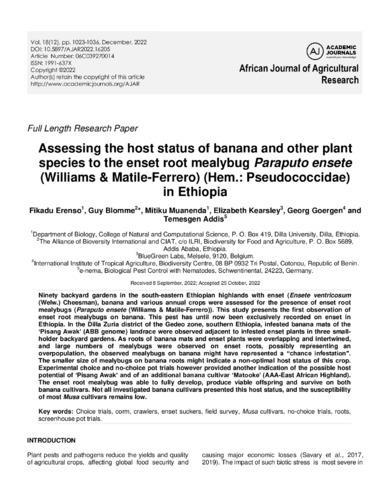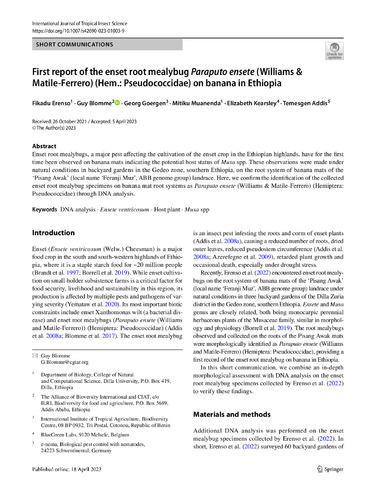Research Articles Enset root mealybugs: Are they a threat to bananas?

In a collaborative effort, researchers at Alliance of Bioversity International and CIAT, and IITA have for the first time identified the host status of banana to enset root mealybugs. Enset root mealybugs were observed on the root system of banana mats under natural conditions, and the host status was confirmed using experimental trials (Erenso et al. 2022). DNA analysis and morphological assessments of the mealybugs confirmed that the same mealybug species attacking enset, Paraputo ensete (Williams & Matile-Ferrero) (Hemiptera: Pseudococcidae), could also attack banana plants.
What are enset root mealybugs?
Enset root mealybugs are an important pest affecting the cultivation of the enset crop. Enset is only cultivated on smallholder farms in the Ethiopian highlands, where it is a staple starch food for ~20 million people. The enset plant looks similar to a banana plant, but is not grown for its fruits. Rather, the plant is mainly grown for its underground corm and pseudostem base which are processed into starchy food products.
The enset root mealybug infests the roots and corm of enset plants, causing a reduced number of roots, reduced pseudostem circumference, dried outer leaves, retarded plant growth and occasional death of the plant. Reduced plant yields critically affect the smallholders’ food security and livelihood, and the overall farming sustainability in this region.
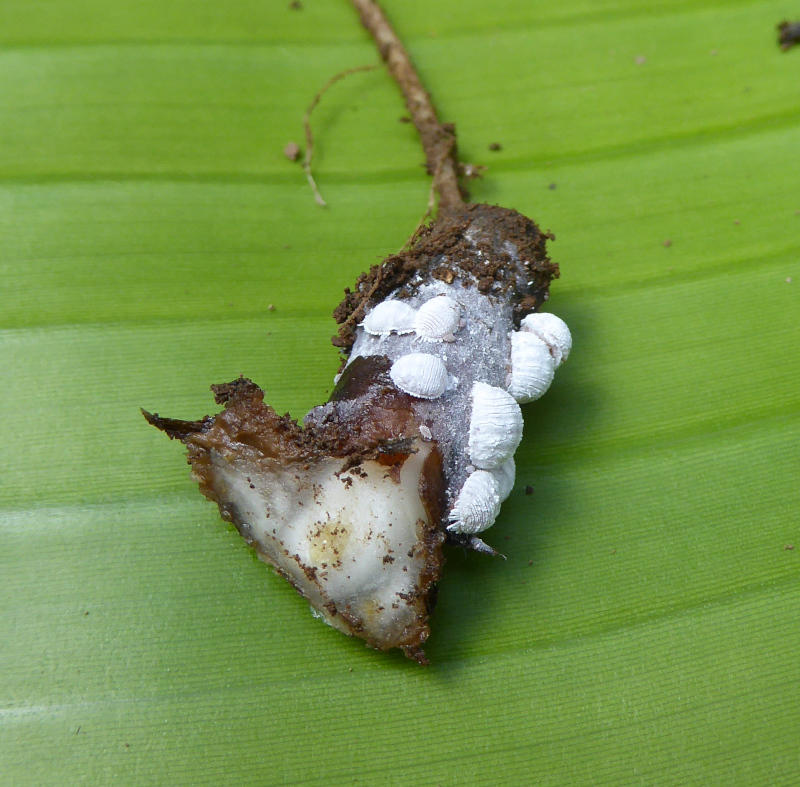
Image: Female adult enset root mealybugs with crawlers on an enset root. Picture by Guy Blomme
Can enset root mealybugs also survive and thrive on banana plants?
Enset and banana plants are closely related, and are similar in morphology and physiology. While this does not ensure a similar host suitability for pests and pathogens, it did warrant investigation by this team of researchers. What's more, these crops are often grown closely together, and enset root mealybugs may already be in the vicinity.
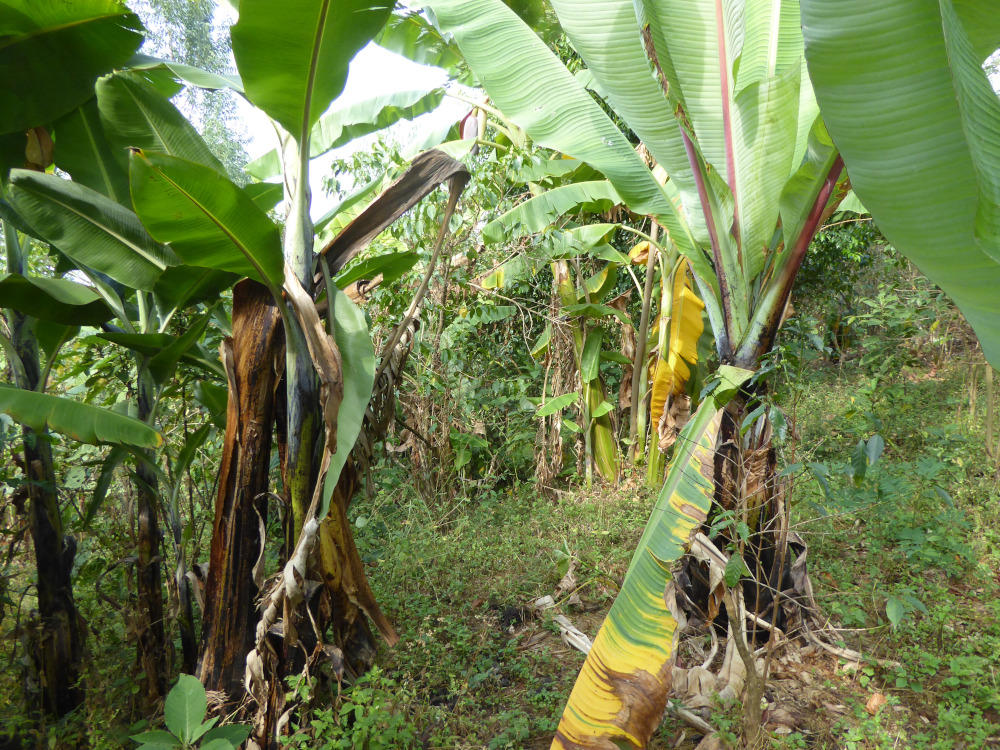
Image: Mealybug infested enset plants and banana plants in the same field. Picture by Guy Blomme.
Field surveys revealed enset root mealybugs on the root system of banana mats of the ‘Pisang Awak’ landrace (ABB genome group) under natural conditions in three backyard gardens of enset farmers. The root mealybugs on the roots of the Pisang Awak mats were identified as Paraputo ensete (Williams & Matile-Ferrero) (Hemiptera: Pseudococcidae), providing a first record of the enset root mealybug on banana in Ethiopia.
The root mealybug specimens collected on the banana mats were notably smaller in size compared to those found on enset, indicating that the banana plant might not be an ideal host.
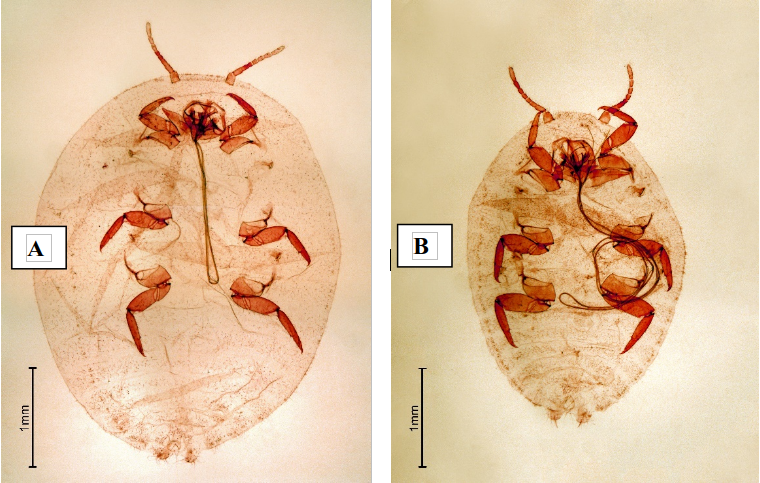
Image: Slide mount pictures of enset root mealybugs sampled on enset (A) and on the banana cultivar Pisang Awak (B) in mixed enset-banana backyard gardens in Southern Ethiopia. Pictures by Georg Goergen.
Are all banana landraces potential hosts?
To investigate this question, banana plants of various landraces were planted under controlled conditions, and infested with enset root mealybugs. These trials confirmed the host potential of Pisang Awak, and identified an additional banana cultivar ‘Matooke’ (AAA-East African Highland) as a potential host.
The enset root mealybugs were able to fully develop, produce viable offspring and survive on these two banana cultivars. The presence of an enset plant was thus not necessary for the pest to survive and reproduce.
Nevertheless, not all investigated banana cultivars presented this host status. Most Musa cultivars, including ‘Giant Cavendish’ and ‘Dwarf Cavendish’, were not susceptible to the enset root mealybug.
What is the expected impact?
For now, no substantial threat is expected to banana cultivation from enset root mealybugs.
The presence and survival of enset root mealybugs on banana plants does pose an additional risk for the spread of the pest. The exchange and trade of infested planting material contributes to the dispersal of the pest, while the different trade routes used for enset and banana material could increase the extent of pest movement. Hot water immersion treatment of both enset and banana planting material (Lemawork et al., 2018), eliminating enset root mealybugs from suckers, should be taught to farmers and implemented before any trade.
Publications
